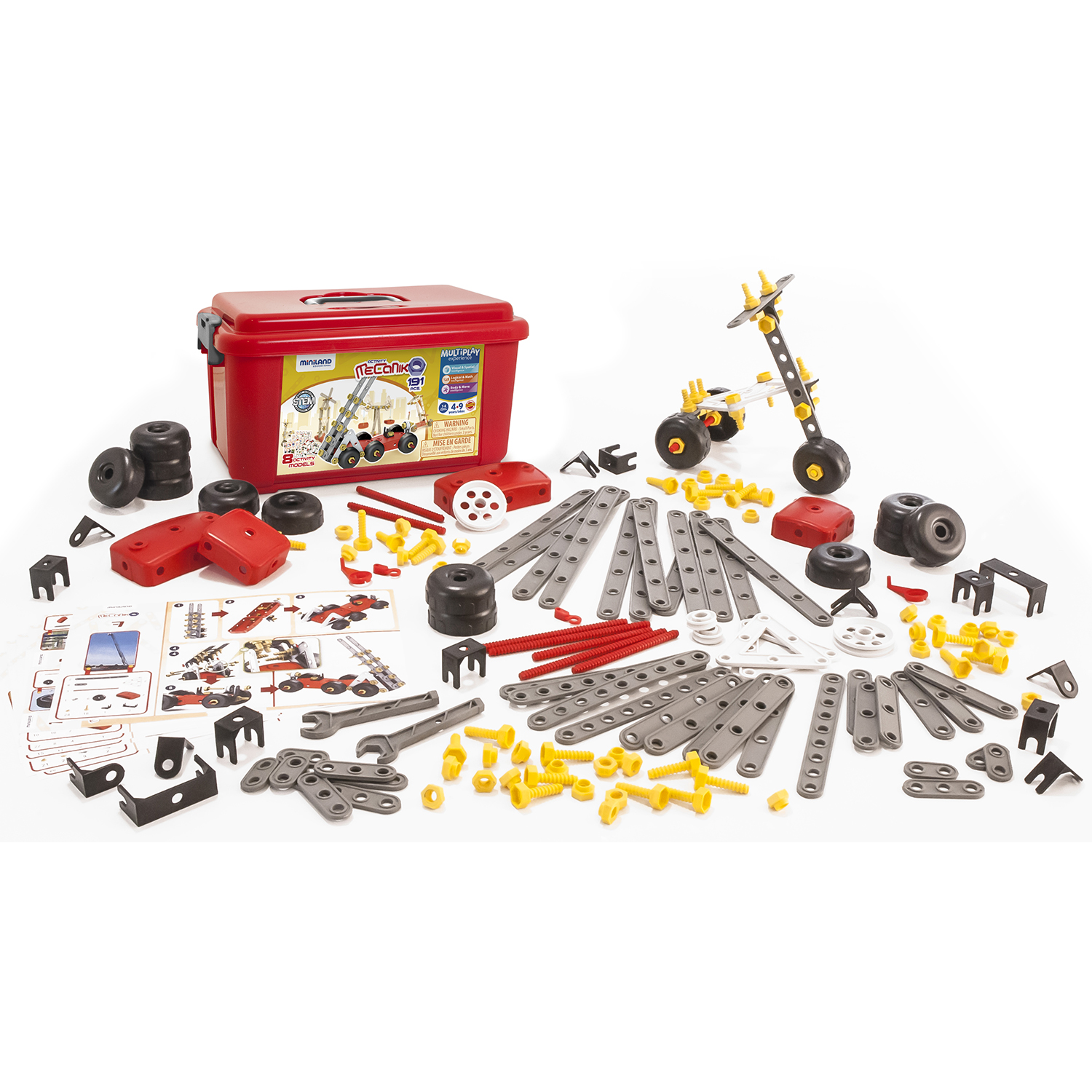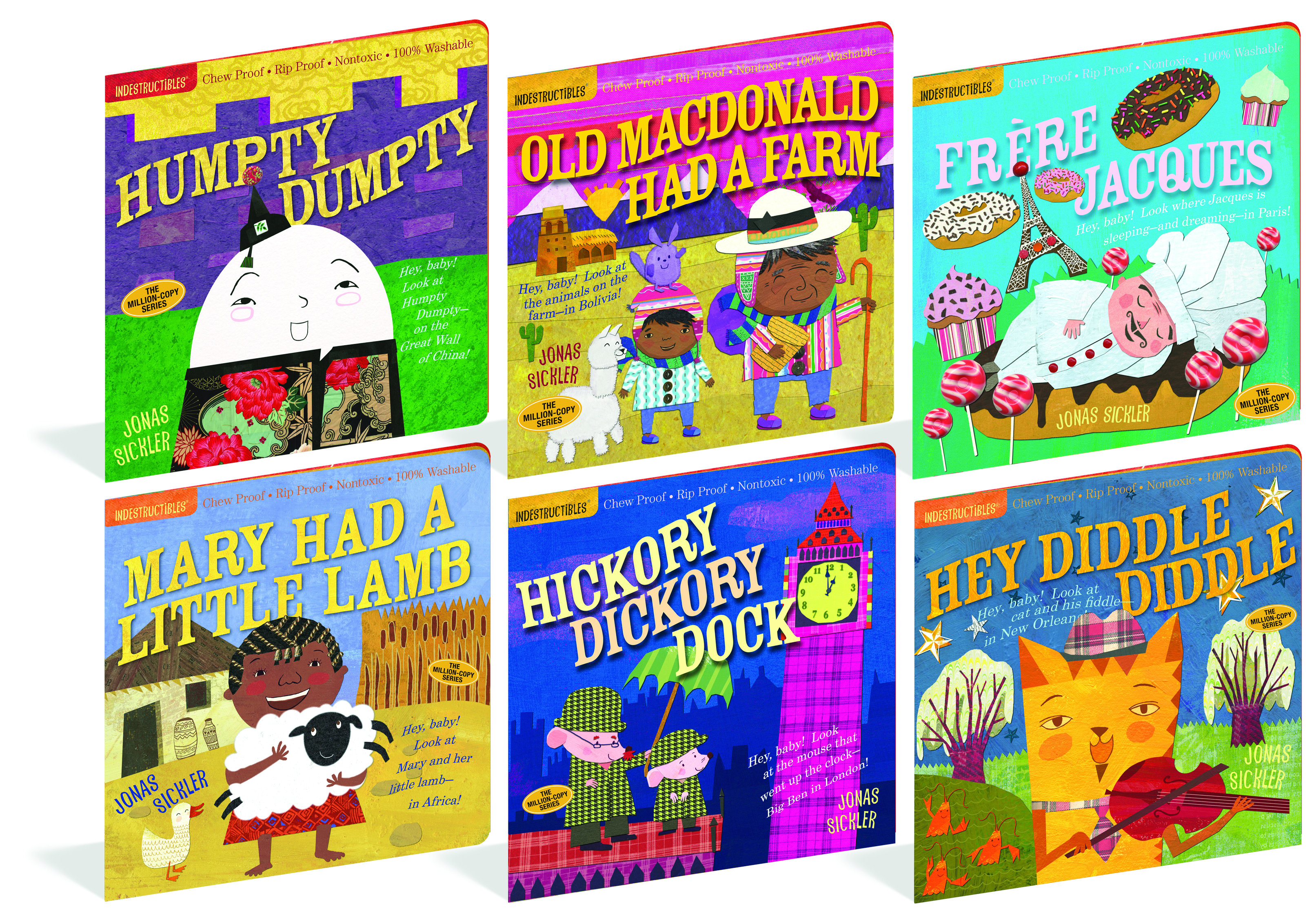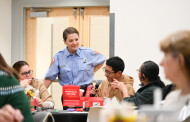Smart toys are among the easiest and most entertaining methods of keeping children of all ages engaged, however, they aren’t always the best choice to foster healthy growth and development. Screen time quality is important, and when it’s overlooked, smart toys can sometimes end up limiting the interaction and socialization that are so pivotal in a child’s development.
Fortunately, there are many alternatives to smart toys that help children learn and develop and have the added benefit of keeping them engaged.
One critical step, though, is for parents to put away their own electronic devices. Parents who want their babies and children to engage with the world outside of a screen need to lead by example and stash away their own phones, tablets and laptops. Our children’s greatest learning tool is us! By putting away our own devices, we can model the desired behavior while focusing our full attention on them.
Think about it this way: Would you rather have a connection with your phone, or would you rather have a connection with your child?
With that in mind, here are three alternatives to smart toys for infants, toddlers and preschoolers.
Infants
Developmentally, infants are learning about their environment and how to interact with it. They are like sponges, watching, listening and taking it all in.
For this reason, one of the best ways for infants to really connect with their environment is through the use of “Indestructibles” books. Published by Workman Publishing, Indestructibles look and feel like actual books but have far more durability for tiny hands and mouths. The thin pages bend and flap and can easily sustain baby teeth and drool. (Case in point: They can be washed and cleaned in the kitchen sink!)
Filled with bright colors and only containing a few words, “Indestructibles” can help your child connect with the people and things they see in their neighborhoods. You can look through the books with your child and later point out those same items while out on excursions. When you’re preparing dinner, for example, you can look at the different items the book features and do things such as explore the differences between oranges and tomatoes.
And if you’re home due to quarantine, you can look at the contents of your refrigerator or point out neighborhood regulars such as the mail carrier and garbage collectors. However you decide to proceed, Indestructible books act as a jumping-off point to interact with your child, engage them in the beginnings of conversation and teach them about their environment.
Toddlers
Toddlers are gradually understanding their environment, how they work in their environment and why their environment is the way it is. They are going through a big developmental stage in their lives where they learn about what is safe and what is not safe. They’re also learning about the difference between right and wrong and how to interact with their peers. Sharing and fighting over toys comes with the territory.
To that end, Becker’s School Supply offers a Ramp ‘n Roll STEM Set that will be you and your toddler’s best friend in the learning process. This toy consists of a wooden ramp that can be adjusted to three different levels, plus two cars that players can slide down the ramp and observe as they glide along the floor.
This toy provides a great way for toddlers to learn about taking turns. It even sneaks in some engineering and mathematics. Toddlers can compare and contrast the results as far as what happens when they drop the cars at a high point versus a lower point. They can look at the cause and effect between the height of the ramp and how far the car can go. And since the two cars have different colors, toddlers can take the opportunity to identify those colors.
Bottom line: This type of toy helps toddlers progress in their social and emotional development and helps them interact and learn to take turns. It also inadvertently teaches patience, which is a hard lesson in the age of instant-everything! Plus, it gives them a crash course in mathematics and engineering. What’s not to love?
What’s more, you can simulate this type of toy with things you have lying around the house. You and your child can use different sensory balls and roll them around the house and see what happens and how far the balls will go. By encouraging the use of toys that require players to take turns, parents will help their toddlers have better relationships and interactions with the world around them, especially their peers.
Preschoolers
Like toys for toddlers, toys for preschoolers can help them learn about cooperation and taking turns while also covering a lot of academic points. For this reason, a perfect toy for this age group is an Engineer Activity Set. This contains pictures of real-life objects, such as bridges, that can be replicated, plus the tools needed to create those replicas. There are pulleys, screws, nuts and more that require deep concentration and will help children build objects — and keep little hands busy.
The perfect complement to this toy would be a book such as “The Three Billy Goats Gruff.” This fairy tale is about three brother goats who travel over a bridge and encounter a troll and can be used as a guidebook to help preschoolers understand the concept of a bridge and the purpose bridges serve. Using these two complementary toys also helps facilitate STREAM learning, which incorporates science, technology, reading, engineering, art and mathematics.
More food for thought
The other alternative to smart toys for children of any age group is YOU, the parent! No store-bought toy can compare to the time and attention parents spend with their children. Children learn to trust others through interaction, and they cannot establish trust with parents who are constantly looking at their phones and scrolling through social media.
It’s one thing to smile and laugh while watching cartoons, but it’s a completely different thing to make valuable eye-to-eye contact and have that personal interaction. Something as simple as changing your baby’s diaper or taking a walk with your toddler is an opportunity to have a positive interaction with them. Your child, in turn, can watch you and learn from your expressions and inflections. Smart toys may have fun recorded messages and volumes, but, for children, nothing can compare to the sound of their parents’ voices.
The Takeaway
It’s tempting to let children play with smart toys that easily entertain them while you work and get things done around the house, but reaching for a tablet should not be the first choice. By providing children with interactive, alternative options — and by putting away their own devices — parents can keep their little ones entertained while also giving them valuable learning opportunities.









